Some fish don’t swim—they torpedo. While most sea creatures drift and glide, these aquatic speed demons turn the ocean into a racetrack. They slice through waves with tails built for power and bodies sculpted by motion. You won’t need a radar gun to spot them, but you will need sharp eyes, a bit of luck, and the right stretch of summer coastline. From blue bullets to silver flashes, these fish make high-speed look effortless—and vanish before your brain can catch up. Think you’ve seen fast? The ocean’s about to prove you wrong. Let’s dive into the waters where speed rules and fins blur—because these fish aren’t just fast… they’re unforgettable.
Sailfish

Renowned for its unparalleled speed, the sailfish can clock in at over 68 mph. Its striking dorsal fin, akin to a sail, gives the fish its name and adds to its magnificent appearance. Found in both the Atlantic and Pacific Oceans, the sailfish is a sought-after catch for game fishers. Its agility and strength make it a challenging contender in fishing competitions.
If you’re seeking to witness this speedy marvel, head to the coastal waters of Florida or Mexico, where they are prevalent during the summer months. Prepare to be amazed by their acrobatic leaps and swift dashes.
Black Marlin
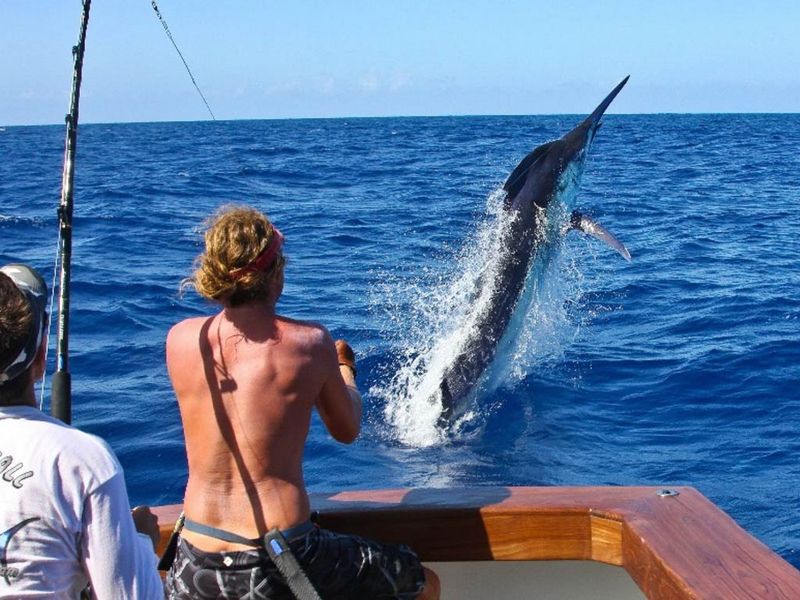
With a top speed of 82 mph, the black marlin is a true ocean sprinter. This fish’s impressive bill allows it to slice through water with ease, making it a formidable hunter. Predominantly found in the Indo-Pacific region, the black marlin is a prized catch among deep-sea anglers.
Experience the thrill of seeing a black marlin in action by visiting the Great Barrier Reef or the waters around Fiji. These locations offer prime opportunities to observe this majestic creature in its natural habitat.
Wahoo
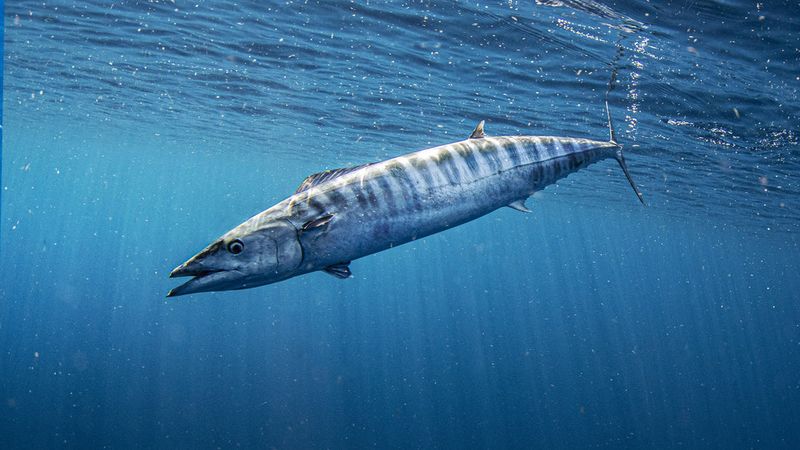
The wahoo, known for reaching speeds up to 60 mph, is a favorite among sport fishermen due to its speed and fight. Its long, slender body and razor-sharp teeth make it a predatory force in the ocean. Found in tropical and subtropical waters worldwide, the wahoo is often spotted near coral reefs.
For those eager to catch a glimpse of this swift swimmer, head to the Caribbean or the warm waters off Hawaii. Summer is the ideal time to spot them as they are most active during warmer months.
Bluefin Tuna
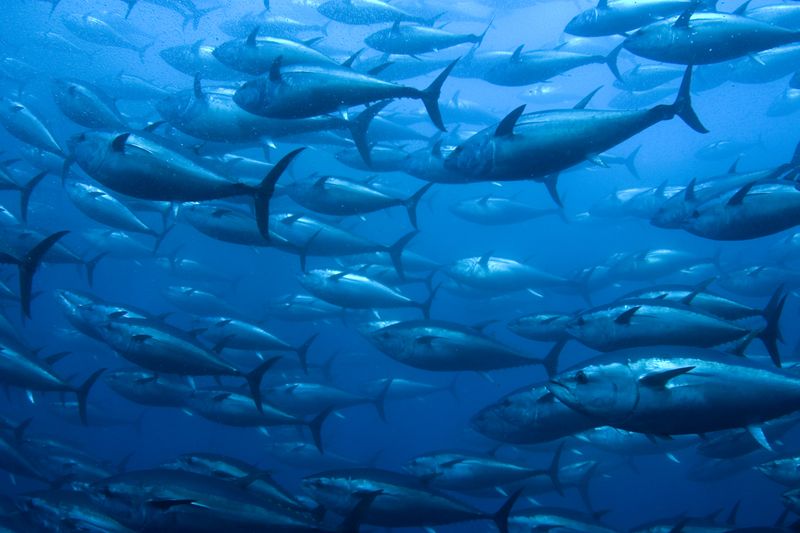
Bluefin tuna are a marvel of speed and endurance, capable of reaching 43 mph. These ocean giants are not only fast but also incredibly powerful, making them a top choice for big-game fishing. The bluefin’s torpedo-shaped body aids in its swift movement through the water.
To see these incredible fish, visit the Mediterranean Sea or the waters off the coast of Japan during the summer. Their presence is a testament to the vibrant marine life in these regions.
Mako Shark
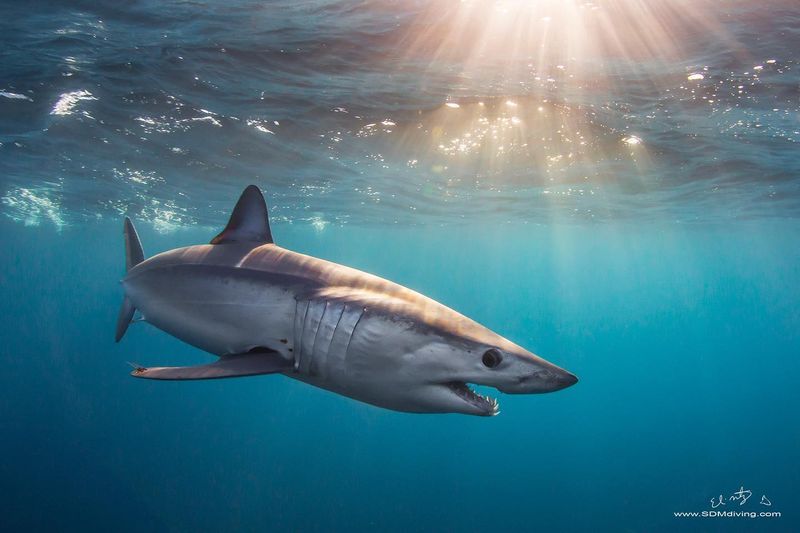
The mako shark, with speeds reaching 60 mph, is renowned for its agility and power. This sleek predator is a master hunter, known for its high-speed pursuits of prey. Found in temperate and tropical seas, the mako shark is a thrilling sight.
For a chance to encounter this swift shark, head to the coast of California or New Zealand. Summer months offer the best conditions for spotting makos, as they often travel to warmer waters during this time.
Swordfish
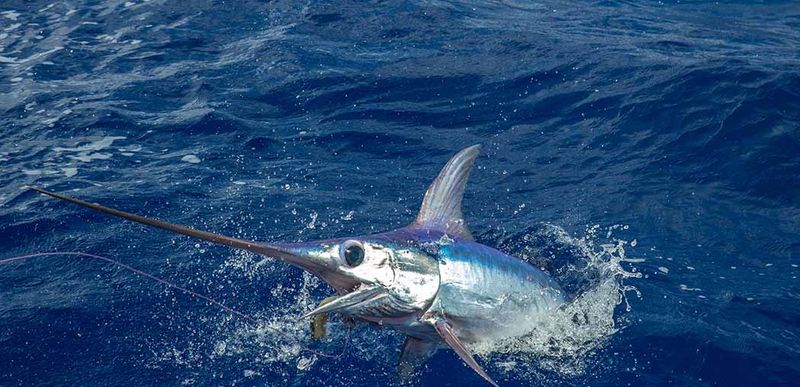
Swordfish are famous not only for their speed, reaching up to 60 mph, but also for their distinctive bill. This feature allows them to slash through schools of fish with ease. Predominantly found in the Atlantic and Indian Oceans, swordfish are a popular target for sport fishing.
To witness a swordfish in its element, consider visiting the waters off the coast of South Africa or the Gulf of Mexico. These areas provide ample opportunities to see swordfish in action, especially during summer when their activity peaks.
Yellowfin Tuna

Yellowfin tuna, reaching speeds of 46 mph, are well-known for their stamina and strength. These agile swimmers are often seen in schools, creating a mesmerizing spectacle. Their vibrant yellow fins make them easy to spot against the deep blue ocean.
For those eager to observe yellowfin tuna, the tropical waters off the coast of Costa Rica or the Seychelles offer perfect viewing spots. During summertime, these fish migrate to warmer waters, making it an ideal season for sightings.
Bonito
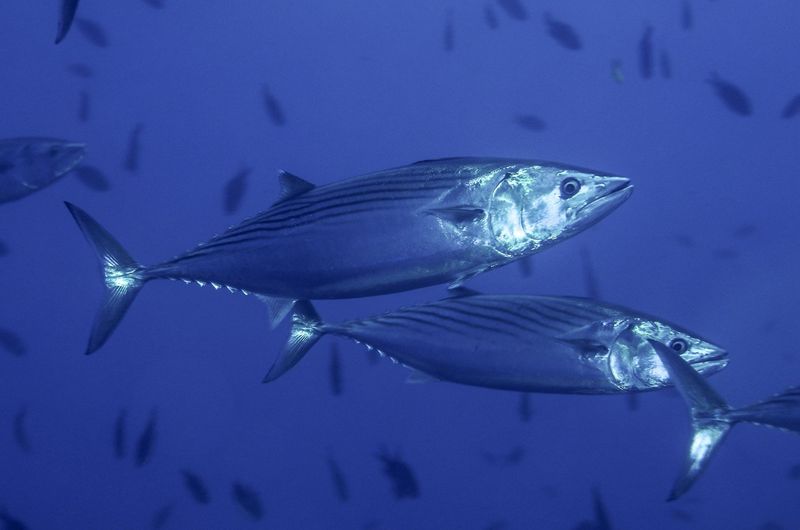
Bonito, known for their bursts of speed up to 40 mph, are small but mighty predators of the sea. Their streamlined bodies make them formidable hunters, often found chasing smaller fish in coastal areas. Bonito are appreciated by anglers for their spirited fight when hooked.
Spotting bonito is best done in the waters off the Mediterranean coast or the eastern seaboard of the United States during summer, where they frequently hunt. Their presence is a sign of a healthy marine ecosystem.
Albacore Tuna
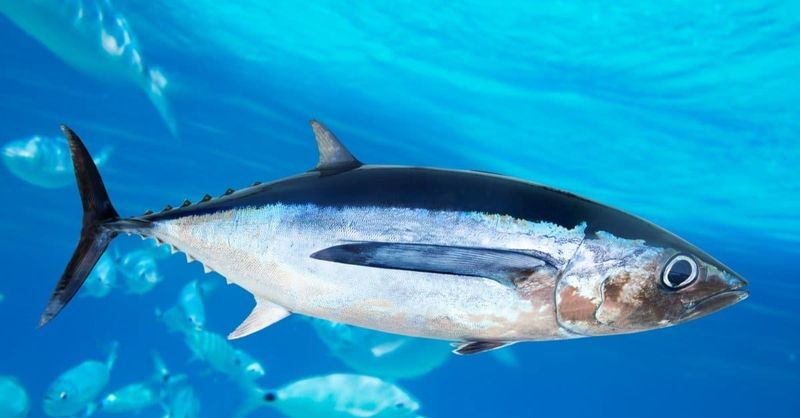
Albacore tuna, reaching speeds of 47 mph, are renowned for their long migrations across the oceans. Their streamlined bodies and long pectoral fins are designed for speed and endurance. These tunas are a favorite among commercial and sport fishermen alike.
To catch sight of albacore tuna, travel to the waters of the North Pacific or the South Atlantic. Summer months bring these speedy swimmers closer to shore, providing excellent opportunities for observation.
Flying Fish

Flying fish are unique for their ability to glide above the water’s surface, reaching speeds of 35 mph. This incredible adaptation helps them evade predators in dramatic fashion. Found in tropical and subtropical oceans worldwide, flying fish are a wonder to behold.
For a chance to witness their aerial displays, visit the Caribbean or the coastal waters of Southeast Asia during the summer. These fish offer a remarkable spectacle as they leap and glide through the air.
Barracuda
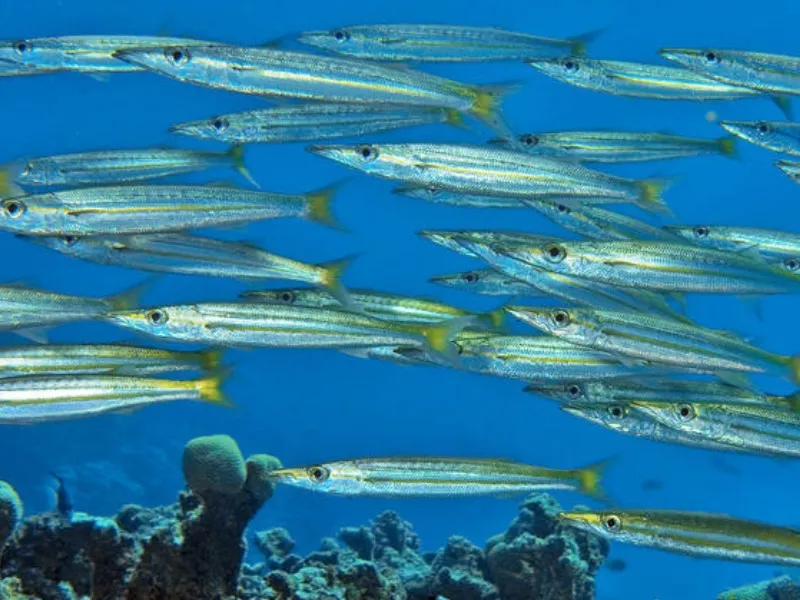
Barracudas, with their lightning-fast strikes and speeds of 36 mph, are formidable predators. Their sleek, torpedo-like bodies enable rapid bursts of speed to catch unsuspecting prey. Found in warm, tropical seas, barracudas are a common sight near coral reefs.
To see these predators in action, explore the waters around the Bahamas or the Red Sea during the summer. Their presence adds an element of excitement to any snorkeling or diving experience.
Skipjack Tuna
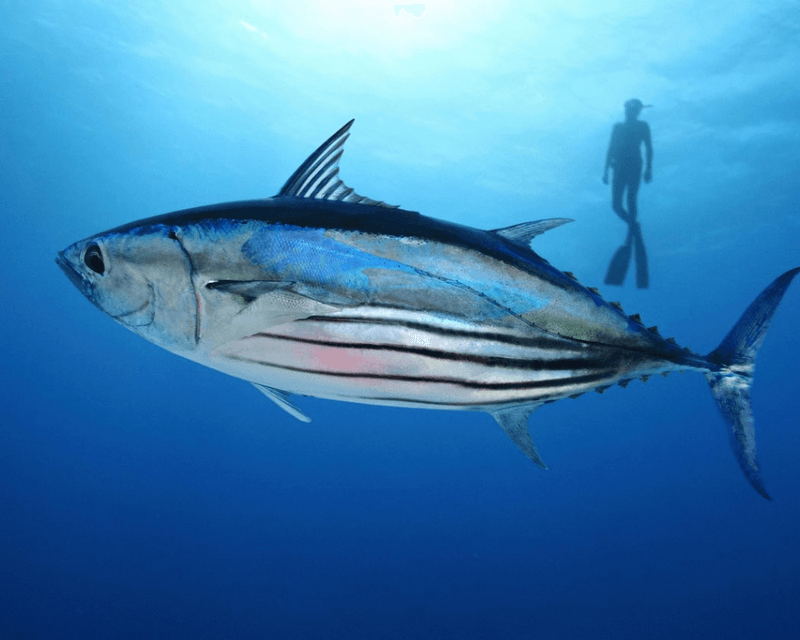
Skipjack tuna, reaching speeds of 40 mph, are known for their rapid movements and schooling behavior. These fish are a crucial part of the marine food chain and are often targeted by both commercial and sport fisheries. Their distinctive stripes make them easy to identify.
To encounter skipjack tuna, visit the warm waters of the Indian Ocean or the Pacific. Summer is prime time to observe large schools, as they migrate towards warmer currents.
King Mackerel
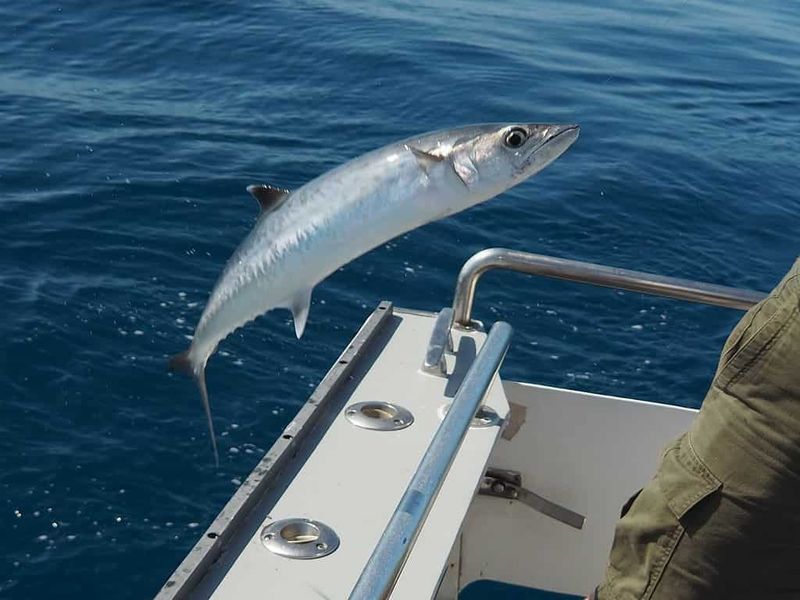
King mackerels, zipping through the ocean at 40 mph, are prized for their speed and fighting spirit. These fish are commonly found in coastal waters, often in large schools. Their streamlined bodies and sharp teeth make them adept hunters.
The Gulf of Mexico and the southeastern coast of the United States are perfect locations to spot king mackerel during the summer. Their presence is a thrill for anglers and marine enthusiasts alike.
Atlantic Blue Marlin

The Atlantic blue marlin, with speeds reaching 50 mph, is a symbol of the ultimate game fish. Its impressive size and agility make it a coveted catch for sport fishermen. This fish’s long bill and vibrant blue coloration add to its allure.
To witness the majesty of the blue marlin, head to the warm waters of the Caribbean or the Azores during the summer months. These areas are hotspots for marlin action, offering a chance to see these giants in their natural element.
Great Barracuda
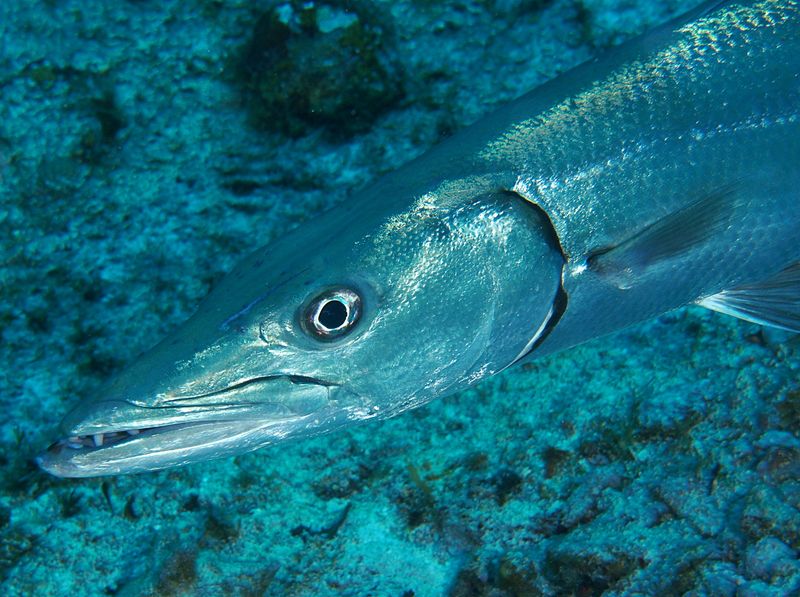
Great barracudas, capable of reaching speeds of 36 mph, are known for their fearsome appearance and swift attacks. These predatory fish have a slender, elongated body equipped with sharp teeth to seize prey. They are common in subtropical and tropical oceans.
For a close encounter with great barracudas, explore the coral reefs of the Caribbean or the Florida Keys. Summer provides the perfect conditions to observe their hunting prowess and sleek movements.
Dorado (Mahi-Mahi)
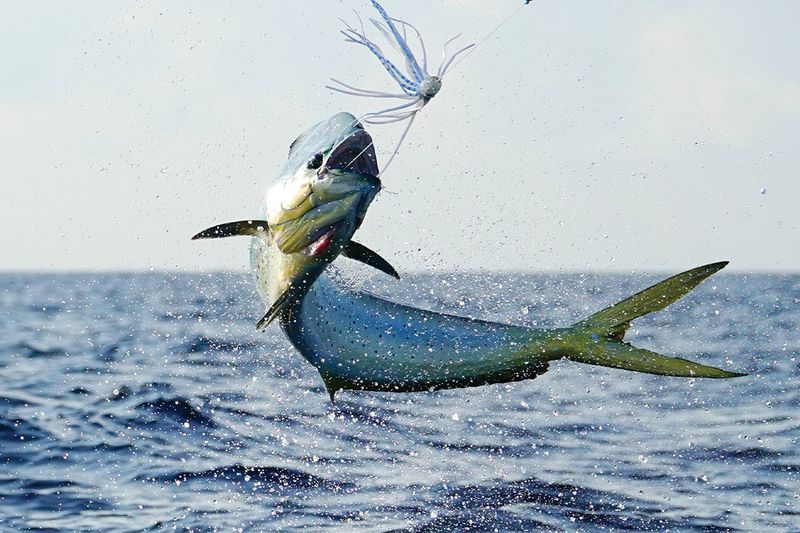
Dorado, also known as mahi-mahi, are not only fast, reaching speeds of 57 mph, but also visually stunning. Their bright, iridescent colors change as they move through the water, creating a dazzling display. These fish are found in warm, offshore waters.
For those eager to see dorado, the tropical waters around Hawaii or the Gulf of Mexico are ideal locations during summer. Their presence is a highlight for any fishing or boating excursion.
Tarpon
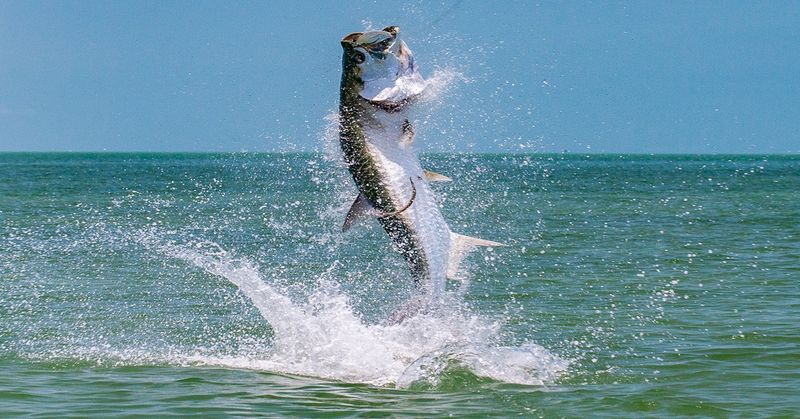
Tarpons, with speeds of 35 mph, are renowned for their acrobatic leaps and powerful runs. These silver giants are popular in sport fishing due to their strength and stamina. Tarpon are often found in warm, shallow waters.
To witness the thrilling leaps of tarpon, visit the coastal waters of Florida or the Caribbean during summer. Their spectacular jumps and splashes are a sight to behold, making them a favorite among anglers and nature enthusiasts alike.
Common Dolphin Fish
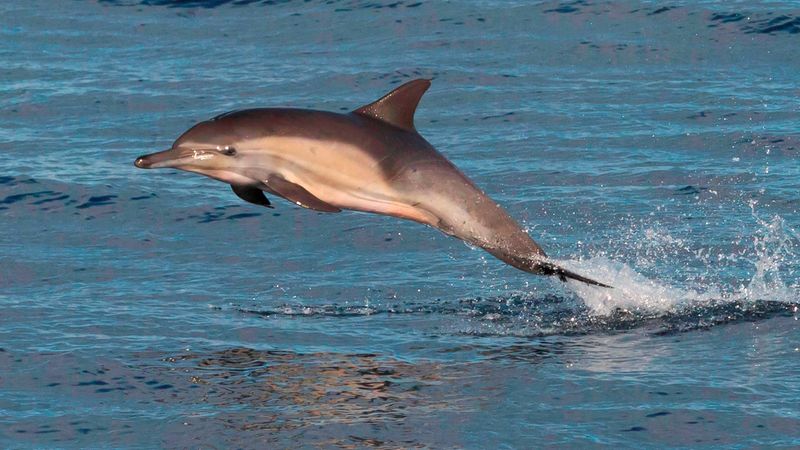
Common dolphin fish, or mahi-mahi, are celebrated for their speed, reaching up to 57 mph, and stunning appearance. Their bright blue and yellow hues make them easily identifiable and a favorite among fishermen. These fish are found in warm ocean waters globally.
For a chance to see common dolphin fish, venture to the coastal regions of the Pacific or the Indian Ocean during summer. Their dynamic colors and rapid movements bring excitement to any ocean adventure.
Spanish Mackerel
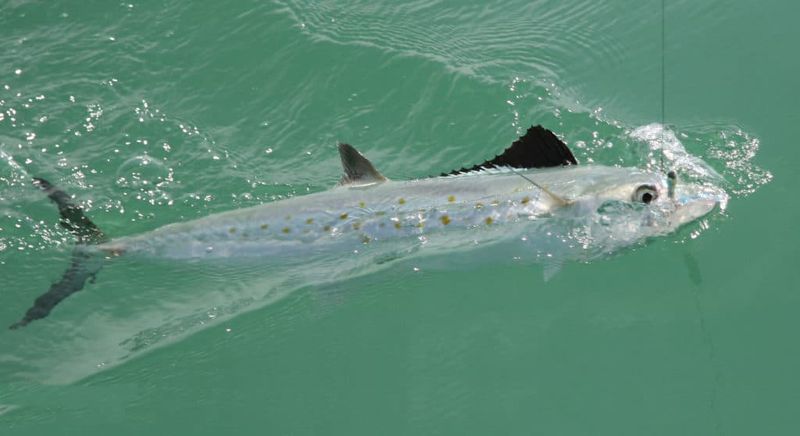
Spanish mackerels, known for speeds of 37 mph, are swift and agile hunters. Their slender bodies and sharp teeth allow them to capture prey with precision. Found in coastal areas, they are a popular choice for anglers.
To spot Spanish mackerel, the coastal waters of the Gulf of Mexico or the eastern coast of Australia are ideal during summer months. Their presence is an indication of a thriving marine environment.
Pacific Bluefin Tuna
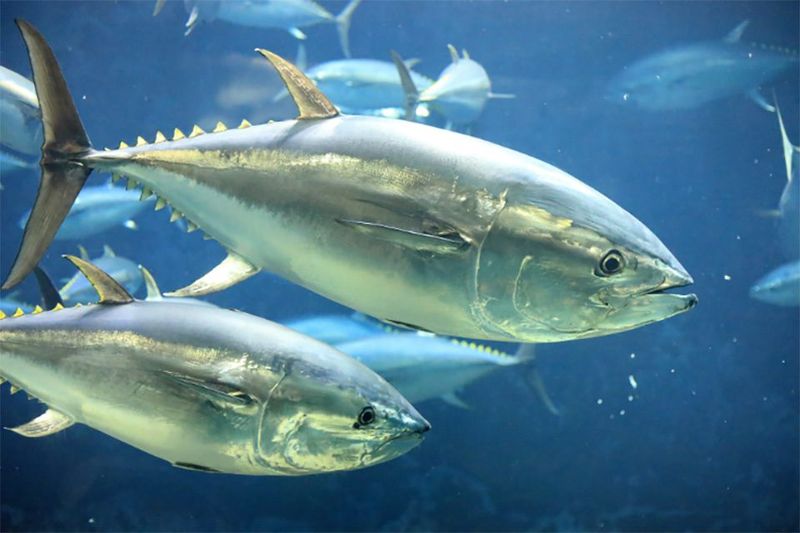
Pacific bluefin tuna, reaching speeds of 44 mph, are admired for their strength and size. These ocean titans are not only fast but also capable of long migrations, adding to their allure. With their torpedo-shaped bodies, they slice through water with minimal resistance.
To observe Pacific bluefin tuna, head to the waters off the coast of California or Japan during summer. Their migratory patterns bring them closer to shore, offering a spectacular sight for marine enthusiasts.

